Dipropylene glycol monomethyl ether
Synonym(s):Dipropylene glycol monomethyl ether;DOWANOL DPM;DPM, Methoxypropoxypropanol
- CAS NO.:34590-94-8
- Empirical Formula: C7H16O3
- Molecular Weight: 148.2
- MDL number: MFCD00059604
- EINECS: 252-104-2
- SAFETY DATA SHEET (SDS)
- Update Date: 2024-10-31 18:15:48

What is Dipropylene glycol monomethyl ether?
Description
DPGME is a colorless liquid with a weakodor. Molecular weight= 148.23; Specific gravity(H2O:1) 5 0.95; Boiling point = 180℃; Freezing/Meltingpoint = 2 80℃; Vapor pressure= 0.5 mmHg at 20℃;Flash point = 74.6℃ (cc); Autoignition temperature=270℃. Explosive limits: LEL = 1.3%; UEL= 10.4. HazardIdentification (based on NFPA-704 M Rating System):Health 2, Flammability 2, Reactivity 1. Highly soluble inwater
Chemical properties
Dipropylene glycol monomethyl ether (DPM) is colorless liquid with a mild, pleasant odor. Because of its structure it is completely miscible with water and a wide variety of organic substances, and has the combined solubility characteristics of an alcohol, on ether and a hydrocarbon. It is used in formulations of brake fluids, lacquers, paints, varnishes, dye and ink solvents, wood stains, textile processes, dry cleaning soaps and cleaning compounds.
Characteristics
Dipropylene glycol methyl ether is a colorless transparent liquid with a faint ether smell. Dipropylene glycol methyl ether has low toxicity. Dipropylene glycol methyl ether has low viscosity and low surface tension. Dipropylene glycol methyl ether has a moderate evaporation rate. Dipropylene glycol methyl ether has good solubility and coupling ability.
Dipropylene glycol methyl ether is miscible with water and has appropriate HLB value. It can dissolve grease, natural resin and rubber, cellulose, polyvinyl acetate, polyvinyl methyl/ethyl/butyraldehyde, alkyd resin, phenolic resin, Polymer chemicals such as urea resin.
The Uses of Dipropylene glycol monomethyl ether
Dipropylene Glycol Monomethyl Ether is used in preparation of special cleaning agent for pot bottom black dirt.
The Uses of Dipropylene glycol monomethyl ether
As solvent for automotive fluids, cleaners, dyes, coatings, inks, waxes, adhesives, agricultural products, insect repellents, and cosmetics; chemical intermediate.
The Uses of Dipropylene glycol monomethyl ether
Dipropylene glycol methyl ether is often used in combination with propylene glycol in cosmetics.
The Uses of Dipropylene glycol monomethyl ether
Solvent for nitrocellulose and synthetic resins
The Uses of Dipropylene glycol monomethyl ether
Dipropylene glycol methyl ether is used as a solvent for nitrocellulose, ethyl cellulose, polyvinyl acetate, etc.; as a solvent for nitrocellulose, ethyl cellulose, polyvinyl acetate, etc., as a solvent for paints and dyes, and also as a brake oil components. It is used as a solvent for printing ink and enamel, and also as a solvent for washing of cutting oil and working oil. Used as a coupling agent for water-based dilution coatings (often mixed).
Dipropylene glycol methyl ether can be used as an active solvent for water-based coatings. Dipropylene glycol methyl ether can also be used as a solvent and coupling agent for household and industrial cleaners, grease and paint removers, metal cleaners, hard surface cleaners; dipropylene glycol methyl ether can be used as a base for solvent-based screen printing inks Solvent, coupling agent; dipropylene glycol methyl ether can be used as coupling agent and solvent for vat dye fabrics; dipropylene glycol methyl ether can be used as coupling agent and skin care agent in cosmetic formulations; dipropylene glycol methyl ether can be used as agricultural insecticide Stabilizer of agent; Dipropylene glycol methyl ether can be used as coagulant of ground brightener.
General Description
Colorless liquid with a weak odor .
Air & Water Reactions
Oxidizes readily in air to form unstable peroxides that may explode spontaneously [Bretherick, 1979 p.151-154, 164]. Miscible with water.
Reactivity Profile
Dipropylene glycol monomethyl ether may react violently with strong oxidizing agents. May generate flammable and/or toxic gases with alkali metals, nitrides, and other strong reducing agents. May initiate the polymerization of isocyanates and epoxides.
Health Hazard
CALL FOR MEDICAL AID. LIQUID: Irritating to skin and eyes. Harmful if swallowed. Remove contaminated clothing and shoes. Flush affected areas with plenty of water. IF IN EYES, hold eyelids open and flush with plenty of water. May be harmful by inhalation, ingestion, or skin absorption. May cause irritation.
Fire Hazard
Combustible. Emits toxic fumes under fire conditions.
Flammability and Explosibility
Non flammable
Safety Profile
fddly toxic by ingestion and skin contact. An experimental skin and human eye irritant. A dd allergen. Combustible when exposed to heat or flame; can react with oxidizing materials. To fight fire, use dry chemical, CO2, mist, foam. When heated to decomposition it emits acrid smoke and irritating fumes. See also GLYCOL ETHERS.
Potential Exposure
PrimaryIrritant. This material is used in antifreeze formulations,cosmetics, cleaning compounds, and heat transfer fluids; asa solvent for nitrocellulose and other synthetic resins.
First aid
If this chemical gets into the eyes, remove any contact lenses at once and irrigate immediately for at least15 min, occasionally lifting upper and lower lids. Seek medical attention immediately. If this chemical contacts the skin,remove contaminated clothing and wash immediately withsoap and water. Seek medical attention immediately. If thischemical has been inhaled, remove from exposure, begin rescue breathing (using universal precautions, including resuscitation mask) if breathing has stopped and CPR if heart actionhas stopped. Transfer promptly to a medical facility. Whenthis chemical has been swallowed, get medical attention.Give large quantities of water and induce vomiting. Do notmake an unconscious person vomit.
storage
: Color Code—Red: Flammability Hazard: Store ina flammable liquid storage area or approved cabinet awayfrom ignition sources and corrosive and reactive materials.Store in tightly closed containers in a cool, well-ventilatedarea away from strong oxidizers (such as chlorine, bromine,and fluorine). Before entering confined space where thischemical may be present, check to make sure that an explosive concentration does not exist. Store in tightly closedcontainers in a cool, well-ventilated area away from heatand incompatible materials. Sources of ignition, such assmoking and open flames, are prohibited where this chemical is used, handled, or stored in a manner that could createa potential fire or explosion hazard. Metal containersinvolving the transfer of 5 gallons or more of this chemicalshould be grounded and bonded. Drums must be equippedwith self-closing valves, pressure vacuum bungs, and flamearresters. Use only nonsparking tools and equipment, especially when opening and closing containers of thischemical.
Incompatibilities
Strong oxidizers. The substance can presumably form explosive peroxides in contact with air.Reacts violently with strong oxidants.
Properties of Dipropylene glycol monomethyl ether
| Melting point: | -80°C |
| Boiling point: | 90-91 °C12 mm Hg(lit.) |
| Density | 0.954 g/mL at 20 °C(lit.) |
| vapor pressure | 0.4 mm Hg ( 25 °C) |
| refractive index | n |
| Flash point: | 166 °F |
| storage temp. | Store below +30°C. |
| Water Solubility | Completely miscible in water |
| solubility | Chloroform (Slightly), Methanol (Slightly) |
| form | Colorless liquid |
| color | Colorless to Almost colorless |
| PH | 6-7 (200g/l, H2O, 20℃) |
| explosive limit | 1.1-14%(V) |
| Merck | 14,3344 |
| Stability: | Stable. Combustible. Incompatible with strong oxidizing agents. |
| CAS DataBase Reference | 34590-94-8(CAS DataBase Reference) |
| NIST Chemistry Reference | Dipropylene glycol monomethyl ether(34590-94-8) |
| EPA Substance Registry System | Dipropylene glycol monomethyl ether (34590-94-8) |
Safety information for Dipropylene glycol monomethyl ether
| Signal word | Warning |
| Pictogram(s) |
 Exclamation Mark Irritant GHS07 |
| GHS Hazard Statements |
H227:Flammable liquids H320:Serious eye damage/eye irritation H335:Specific target organ toxicity, single exposure;Respiratory tract irritation H336:Specific target organ toxicity,single exposure; Narcotic effects |
| Precautionary Statement Codes |
P210:Keep away from heat/sparks/open flames/hot surfaces. — No smoking. P261:Avoid breathing dust/fume/gas/mist/vapours/spray. P264:Wash hands thoroughly after handling. P264:Wash skin thouroughly after handling. P271:Use only outdoors or in a well-ventilated area. P280:Wear protective gloves/protective clothing/eye protection/face protection. P405:Store locked up. P403+P233:Store in a well-ventilated place. Keep container tightly closed. P501:Dispose of contents/container to..… |
Computed Descriptors for Dipropylene glycol monomethyl ether
| InChIKey | QCAHUFWKIQLBNB-UHFFFAOYSA-N |
New Products
4-Aminotetrahydropyran-4-carbonitrile Hydrochloride (R)-3-Aminobutanenitrile Hydrochloride 4-AMINO-TETRAHYDRO-PYRAN-4-CARBOXYLIC ACID HCL 4-(Dimethylamino)tetrahydro-2H-pyran-4-carbonitrile 3-((Dimethylamino)methyl)-5-methylhexan-2-one oxalate 1,4-Dioxa-8-azaspiro[4.5]decane 5-Bromo-2-nitropyridine Nimesulide BP Aceclofenac IP/BP/EP Diclofenac Sodium IP/BP/EP/USP Mefenamic Acid IP/BP/EP/USP Ornidazole IP Diclofenac Potassium SODIUM AAS SOLUTION ZINC AAS SOLUTION BUFFER SOLUTION PH 10.0(BORATE) GOOCH CRUCIBLE SINTERED AQUANIL 5 BERYLLIUM AAS SOLUTION 2-Bromo-1-(bromomethyl)-3-chloro-5-nitrobenzene 2-Bromo-3-nitroaniline N-(3-Hydroxypropyl)-N-methylacetamide 3-Bromo-6-chloropyridazine 4-ethyl-3-nitrobenzoic acidRelated products of tetrahydrofuran


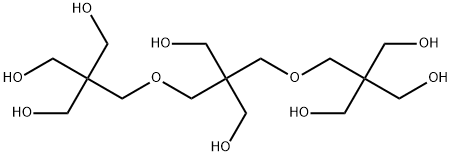
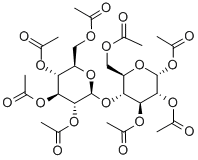
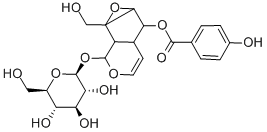
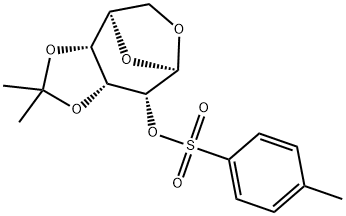

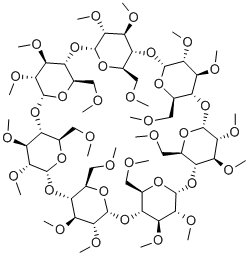
You may like
-
 Dipropylene Glycol Monomethyl Ether CASView Details
Dipropylene Glycol Monomethyl Ether CASView Details -
 Dipropylene Glycol Monomethyl Ether (mixture of isomers) CAS 34590-94-8View Details
Dipropylene Glycol Monomethyl Ether (mixture of isomers) CAS 34590-94-8View Details
34590-94-8 -
 Dipropylene Glycol Monomethyl Ether (Mixture of Isomers) extrapure CAS 34590-94-8View Details
Dipropylene Glycol Monomethyl Ether (Mixture of Isomers) extrapure CAS 34590-94-8View Details
34590-94-8 -
 Dipropylene glycol monomethyl ether (mixture of isomers) 99% CAS 34590-94-8View Details
Dipropylene glycol monomethyl ether (mixture of isomers) 99% CAS 34590-94-8View Details
34590-94-8 -
 Di(propylene glycol) methyl ether, ≥99% CAS 34590-94-8View Details
Di(propylene glycol) methyl ether, ≥99% CAS 34590-94-8View Details
34590-94-8 -
 Dipropylene glycol monomethyl ether CAS 34590-94-8View Details
Dipropylene glycol monomethyl ether CAS 34590-94-8View Details
34590-94-8 -
 Di(propylene glycol) methyl ether, mixture of isomers CAS 34590-94-8View Details
Di(propylene glycol) methyl ether, mixture of isomers CAS 34590-94-8View Details
34590-94-8 -
 Di(propylene glycol) methyl ether, mixture of isomers CAS 34590-94-8View Details
Di(propylene glycol) methyl ether, mixture of isomers CAS 34590-94-8View Details
34590-94-8